- eISSN 2353-8414
- Phone.: +48 22 846 00 11 ext. 249
- E-mail: minib@ilot.lukasiewicz.gov.pl
The effect of information communication technology readiness and knowledge management on entrepreneurial strategic orientation and its implications on firm performanceE
Oscar Jayanagara1, Kelly Azaryas Chen2
1 Faculty of Economy & Business, University of Pelita Harapan, Indonesia
MH Thamrin Boulevard 1100, Klp. Dua, Kec. Klp. Dua, Kota Tangerang, Banten 15811
2 Product & Industrial Design, Temasek Polytechnic, Singapore
1*oscar.fe@uph.edu, 22204118J@student.tp.edu.sg
Oscar Jayanagara: ORCID: 0009-0007-8732-1980
DOI: 10.2478/minib-2023-0005
Abstract:
This research aims to investigate the effect of the information communication technology readiness and knowledge management on entrepreneurial strategic orientation and their implication to firm performance. The methodology of this research was explanatory research with hypothesis testing for examining seven hypotheses. The study populations were small medium enterprises located in DKI Jakarta, with a sample size of 392 SMEs. Data for this study were collected using questionnaires, and structural equation modeling (SEM) was employed for data analysis. The results of this research were as follows: (1) Information communication technology readiness positively and significantly influenced entrepreneurial strategic orientation; (2) knowledge management positively and significantly influenced entrepreneurial strategic orientation; (3) information communication technology readiness and knowledge management positively and significantly influenced entrepreneurial strategic orientation; (4) information communication technology readiness positively and significantly influenced firm performance; (5) knowledge management positively and significantly influenced firm performance; (6) entrepreneurial strategic orientation positively and significantly influenced firm performance; and (7) information communication technology readiness, knowledge management, and entrepreneurial strategic orientation positively and significantly influenced firm performance. The mediating effect of entrepreneurial strategic orientation increased the effects of information communication technology readiness and knowledge management on firm performance. The results of this research indicate that the effect of information communication technology readiness and knowledge management on entrepreneurial strategic orientation, information communication technology readiness, and knowledge management on entrepreneurial strategic orientation on firm performance of SMEs of Jakarta. All of seven hypotheses that are proposed in this research can be accepted. Information communication technology readiness as an independent variable was the strongest influence on entrepreneurial strategic orientation, and entrepreneurial strategic orientation was the strongest influence on firm performance. This dissertation also discusses the findings and limitations, theoretical and practical contribution, theoretical and managerial implications of the study, and suggestions for future research.
MINIB, 2023, Vol. 47, Issue 1
DOI: 10.2478/minib-2023-0005
P. 71-104
Published 31 March 2023

The effect of information communication technology readiness and knowledge management on entrepreneurial strategic orientation and its implications on firm performanceE
Introduction
Entrepreneurial strategic orientation is an aspect of entrepreneurship that encapsulates a successful strategy (Omasakin, Nakhid, Littrell, & Verbitsky, 2016). Rauch, Wiklund, Lumpkin, and Frese (2009) stated that entrepreneurial strategic orientation represents the policies and practices that provide the basis for entrepreneurial decisions and actions. Lumpkin and Dess (1996) described entrepreneurial strategic orientation as a multi-dimensional process consisting of five dimensions: (1) risk taking, meaning that in running their business, entrepreneurs, even though they do not yet have sufficient capacity or experience, dare to take risks in order to seize opportunities; (2) competitive aggressiveness, that is, in running their business, entrepreneurs tend to be passionate about competing, to reach their customers; (3) autonomous, meaning that entrepreneurs have independence in implementing policies and in making strategic decisions; (4) proactive, that is, the tendency of entrepreneurs to know more deeply about the advantages of competitors, as well as the desires of its customers; and (5) innovation, meaning that entrepreneurs always want to create a new product or service that is different from what is available in the market, and for that, they have a tendency to continue innovating.
From the previous definition, it is clear that entrepreneurial behaviour is the main and essential element in the entrepreneurial process. In other words, entrepreneurial strategic orientation refers to how companies act in the areas of risk taking, innovation, proactivity, autonomy and competitive aggressiveness. Entrepreneurship researchers agree that entrepreneurial strategic orientation is potentially important in measuring the performance of small to medium enterprises (Omisakin et al., 2016).
Entrepreneurship is the process of creating value by bringing together a unique set of resources to exploit its entrepreneurial opportunities (Omisakin et al., 2016). Entrepreneurship is considered a major key in promoting economic growth, innovation, competitive advantage and job creation (Johnson, Snowden, Mukhuty, Fletcher, & Williams, 2015), and entrepreneurship is also a skill needed by an entrepreneur to achieve success. Previous studies and policies that have been made have focused on the conditions needed for entrepreneurshipthe definition of creating new businesses-to good growth (Johnson et al., 2015). The importance of entrepreneurship activities in society has been recognised by various entrepreneurial studies (Omisakin et al., 2016), where it is suggested that entrepreneurial strategies, especially in terms of entrepreneurial orientation, can make a major contribution to entrepreneurial performance (Reynolds, 2000).
Entrepreneurship performance/firm performance or entrepreneur performance is a focus in business studies (Gharakhani & Mousakhani, 2012). However, this phenomenon is also complex and multi dimensional. Performance can be characterised as the company’s ability to create results and actions that are acceptable to all stakeholders (Gharakhani & Mousakhani, 2012). For many organisations, achieving improved performance does not only depend on the successful implementation of tangible assets and natural resources but also on effective knowledge management (Lee & Sukoco, 2007). Entrepreneurial strategic orientation is often referred to as an antecedent of corporate growth, competitive advantage and superior performance (Omisakin et al., 2016). Previous research as confirmed that there is a positive association between entrepreneurial strategic orientation and firm performance (Runyan, Droge, & Swinney, 2008). The success of a company depends on entrepreneurial strategic orientation and various other factors, including age, gender, culture, education, managerial knowledge, length of time, company size, capital and network connections (Omisakin et al., 2016).
Studies on MSMEs and ICT readiness showed that heterogeneity related to the availability of resources, the role played by the owner/manager and attitudes towards ICT itself (Parker & Castleman, 2009). Their research also showed differences in abilities, especially with regard to management and technology (Caldeira & Ward, 2002). Most of the previous studies on ICT readiness in the context of SMEs focused on the issue of adoption and its associated effects (Parker & Castleman, 2009). But there is no profile of MSME companies that consistently discusses their ability to use ICT in a meaningful way. ICT readiness in SMEs is also constrained by the organisational characteristics of the SMEs themselves (Kartiwi & MacGregor, 2007). ICT, which will help improve the competitiveness of MSMEs, is still experiencing major obstacles in terms of readiness. It is estimated that less than 40% of 56.5 million MSMEs have utilised ICT in running their business (Spinelli, Romano, & Harindranath, 2013).
In Indonesia, ICT readiness of MSMEs is constrained by inadequate infrastructure readiness (Sheth & Sharma, 2005), the low average income of the community (Hawk, 2004) and cultural issues (Hofstede et al., 2002). The lack of understanding of the strategic role of ICT in the context of new approaches to marketing, active relationships with customers and product and service development, as well as continuous innovation in products and services, is suspected to be the low ICT readiness of MSMEs, even though there is a unique phenomenon, namely, the existence of users online, which has increased significantly in Indonesia. This study uses the concept of ICT readiness in the profile of MSMEs in relation to their readiness to use ICT (Spinelli et al., 2013). Table 1 shows research data from Sosa, Roy and Bautista (2015) who studied MSMEs in Manzanillo, Mexico, which faced several obstacles when MSMEs wanted to use social media networks. This obstacle involves the fact that companies do not fully utilise social media to increase the productivity and income of MSMEs (Table 2).
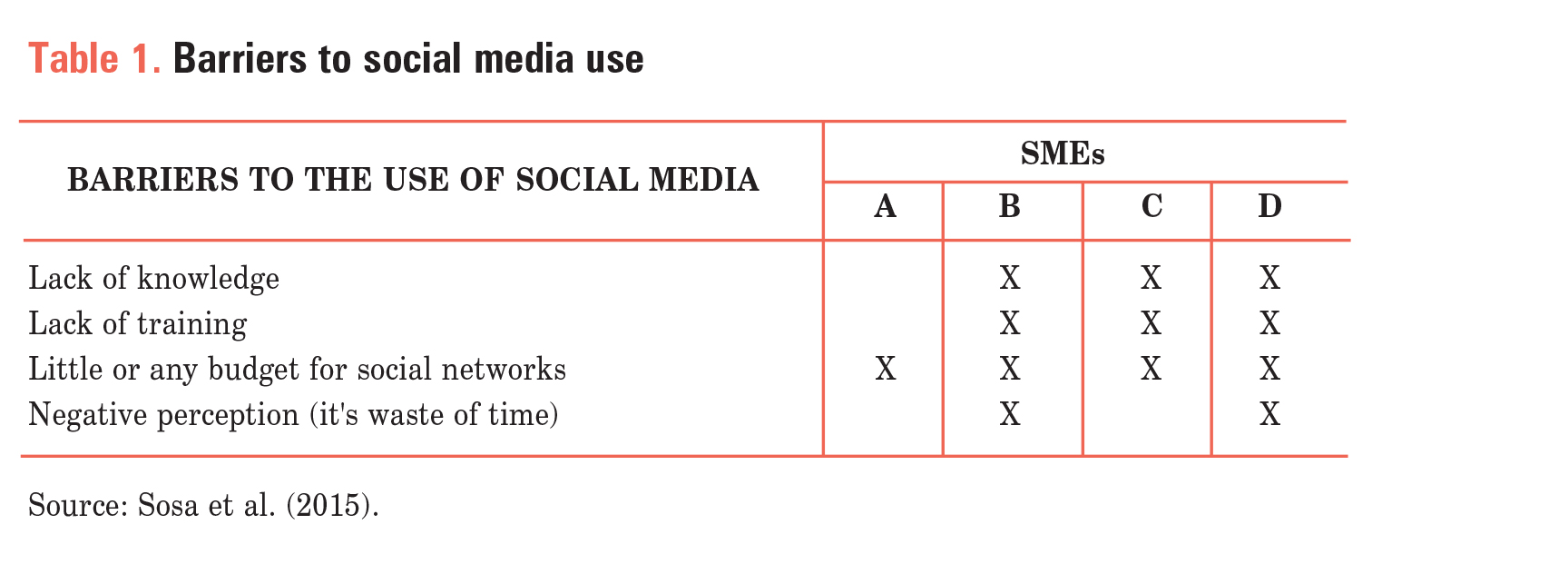
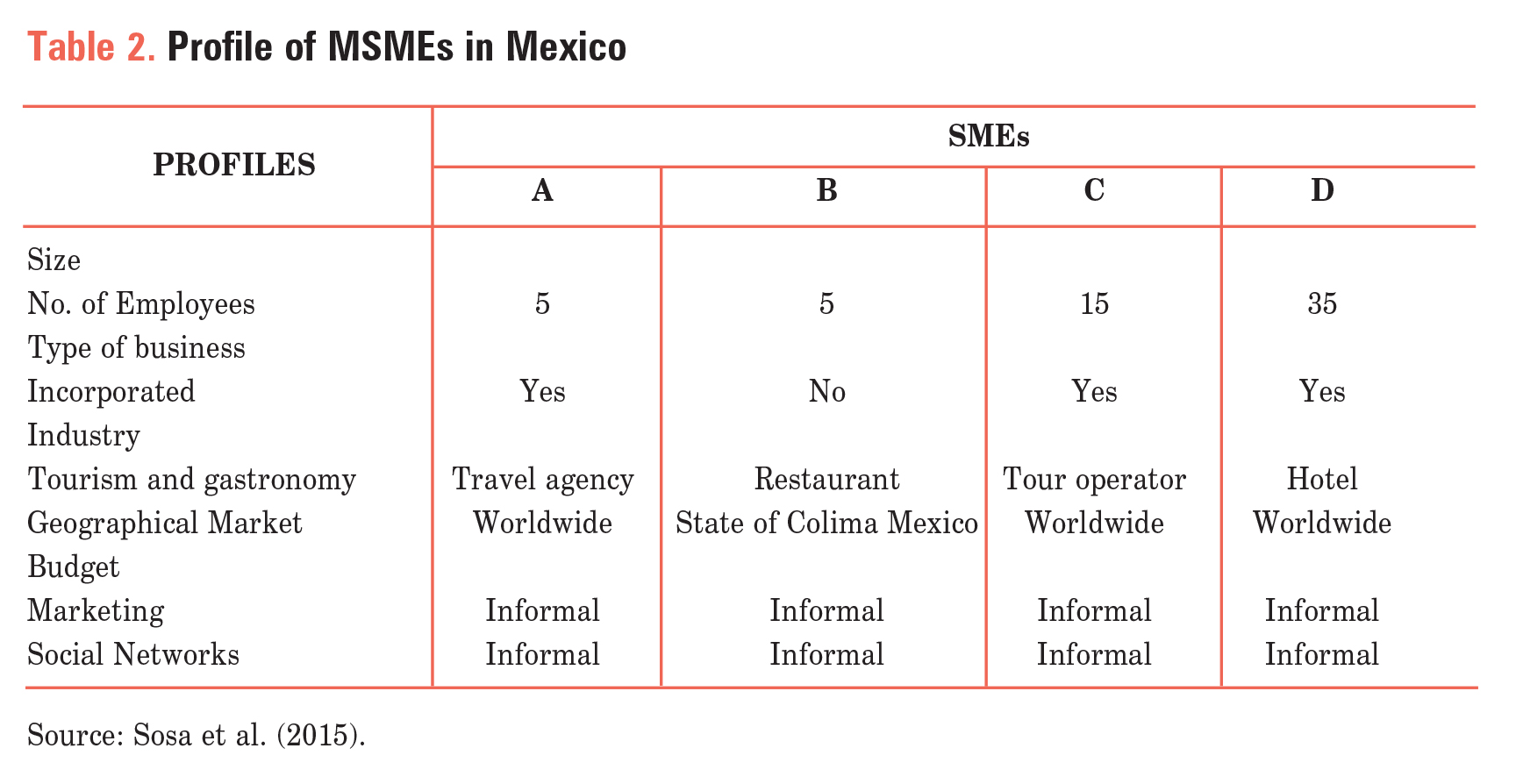
Table 3 shows research data from several researchers regarding the limitations experienced by MSMEs in the UK and Commonwealth countries, which are developed countries, in improving their entrepreneurial strategic orientation and firm performance of MSMEs.
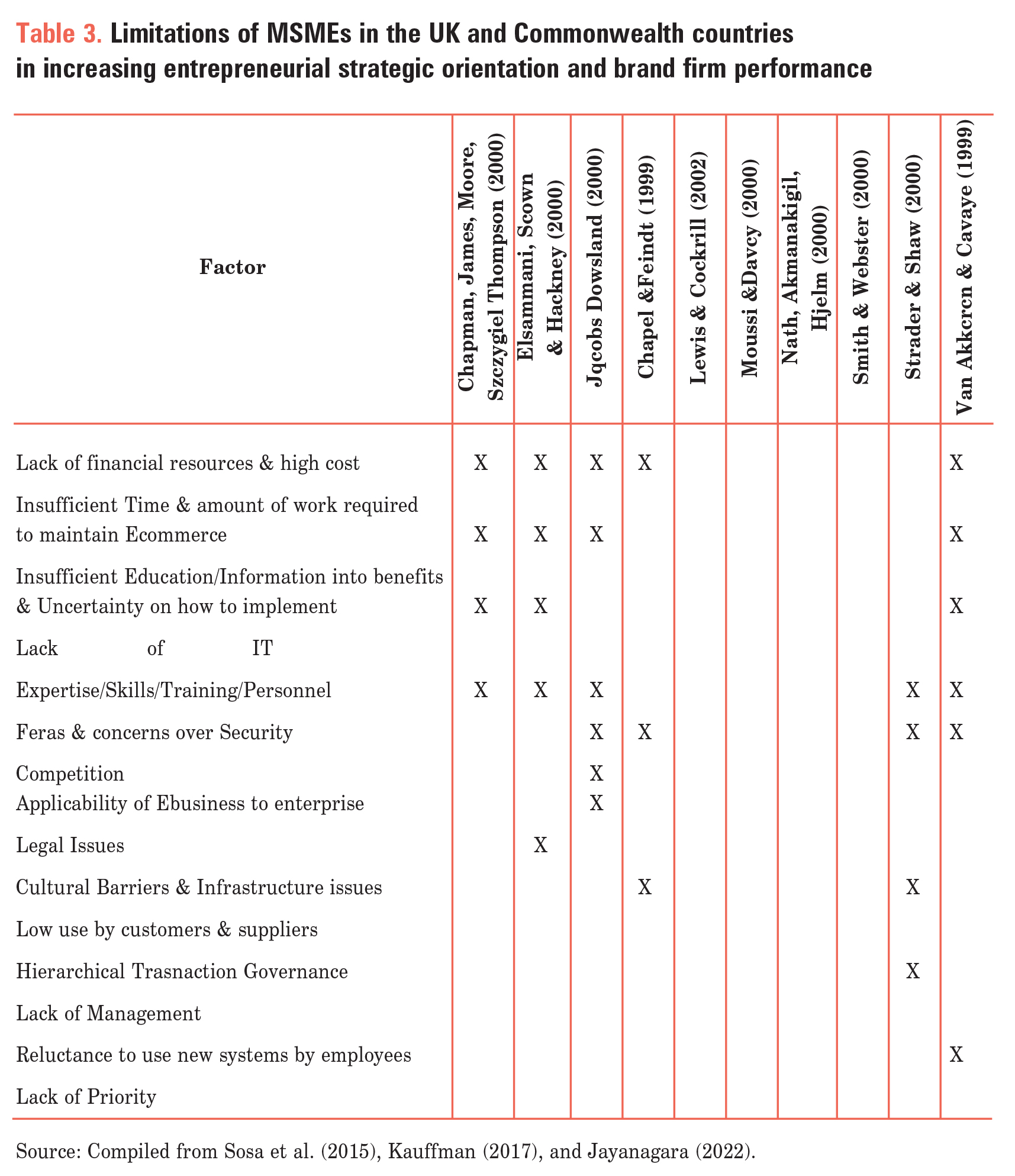
In Indonesia, the trend of entrepreneurship is getting better through the creation of new companies, local small businesses and the growth of MSME companies. Entrepreneurial indicators as a whole have improved, job creation by new companies has continued to increase and optimism among small business owners has increased. However, many entrepreneurship indicators were below their peak before the 1998 recession, and some of the entrepreneurship dynamics indicators are still on a long-term downward trend. While looking at the phenomenon when this research was conducted, there are at least three big trends that are shaping the future of entrepreneurship in Indonesia, as well as around the world. Firstly, there is a new demographic in entrepreneurship. The Indonesian population has an extraordinary demographic bonus with racial diversity. By 2050, seven out of every 10 Indonesian adults will enter a productive age. The productive population dramatically influences the entrepreneurial network of entrepreneurs, and growth is linked to a long-term decline in the dynamics of entrepreneurship in Indonesia. Certain demographic groups are consistently underrepresented in the entrepreneurial economy, leaving huge gaps in the market. Minorities own more than half of non-minority businesses, and their businesses started small and will remain smaller. This gap is, of course, detrimental to the country. In fact, if minorities start and own businesses at the same rate as non-minorities do, Indonesia will have over 1 million additional business entrepreneurs and around 9.5 million jobs in the economy. Regardless of race, women entrepreneurs account for less than half of the male entrepreneurs who own a business. While not a new trend, the persistent gender business gap accounts for an additional 1.7 million businesses. Adults without a high school degree account for 11.6 percent of the population, but only 3.4 percent of them are entrepreneurs. Secondly, there is a new map of entrepreneurship. Entrepreneurial activity seems to increasingly occur outside the centre of entrepreneurial stereotypes. Venture capital is more distributed than it was in the 1980s. Thirdly, there is a new nature of entrepreneurship. Entrepreneurial companies create jobs, wealth and innovation. This has been going on for decades. However, technology has made the act of creation inherently different from that before. When Facebook achieved the same sales figures in today’s dollars, it employed only 6,300 people. At the same time, new industries are opening up, and entrepreneurship opportunities are becoming more accessible through platforms that reduce barriers to entry (lower barriers to entry). In this study, an empirical survey was conducted on MSME companies in the capital city of DKI Jakarta. This study also explores the theoretical implications of how MSME companies are conceptualised in the literature related to their use of information communication technology readiness.
Literature Review
Performance
Performance aims to determine how a company achieves goals or objective standards (Okeyo, Gathungu, & K’Obonyo, 2016). In business research, the definition depends on the discipline or field of study. Wu and Zumbo (2009) associated performance with the value of customers and other stakeholders of a company. Performance means achieving stakeholder interests in a way that is superior to competitors (Okeyo et al., 2016). Therefore, having superior performance requires an organisation to achieve its goals effectively and efficiently (Gathungu, Aiko, & Machuki, 2014). Efficiency and effectiveness have become popular measures, and a series of measures in manufacturing, finance and marketing have been used in the past. In manufacturing, Kombo, K’Obonyo, and Ogutu (2015), Atalay, Anafarta, and Sarvan (2013), and Wu, Zumbo (2009) have advocated measuring five key dimensions, namely, reliability, quality, product price or cost, and flexibility to determine performance. The aim is to use a multi-dimensional approach that takes into account the combination of various factors that affect performance, thereby combining the interests of shareholders and stakeholders (Okeyo et al., 2016).
Operationalisation of performance remains a problem in academic research until this research was carried out. Information is considered a contextual issue. Therefore, measurement becomes more of a factor than what is being determined and even where and when it is measured. In business in general, and in more specific fields such as entrepreneurship, there is a general consensus that the main concern of a company is performance (Gathungu et al., 2014). Despite this consensus, there is no agreed-upon performance measure. According to Odhiambo (2015), previous studies have been carried out to justify the selection of indicators to measure performance and tend to follow tradition. Performance measurement has finally changed in the last few decades, from purely financial indicators to non-financial performance (Okeyo et al., 2016).
SME owners were described by Stewart and Roth (2001) as growthoriented, while Jenkins and Johnson (1997) defined SME entrepreneurs as individuals who build and manage businesses for the purpose of furthering personal goals. Carland, Carland, Hoy and Boulton (1988) described an entrepreneur as an individual who operates a small business for profit and growth. Carland, Hoy and Carland (1984) distinguished MSME owners from entrepreneurs in terms of extension of the small business owner’s personality, continuation of personal goals and generation of family income. This position was corroborated by Jenkins and Johnson (1997) who showed that small business owners engage in coherent personal strategies such as earning a living and having more free time. A high entrepreneurial spirit among MSME owners increases the formation and activation of personal strategies that have an impact on business growth and performance. Entrepreneurial behaviour influences entrepreneurs and MSME owners in their involvement in business and product innovation, and market development (Carland et al., 1984). It is clear that MSME entrepreneurs are involved in business innovation.
According to Law Number 9 of 1995, Indonesian MSMEs are defined as small businesses that have assets other than land and buildings equal to or smaller than 200 million rupiah with an annual turnover of up to 1 billion rupiah. Medium businesses are legal business entities that have assets between IDR 200 million and IDR 10 billion. In this study, the reference to Law no. 9 of 1995 is the operational definition of UMKM (Table 4).
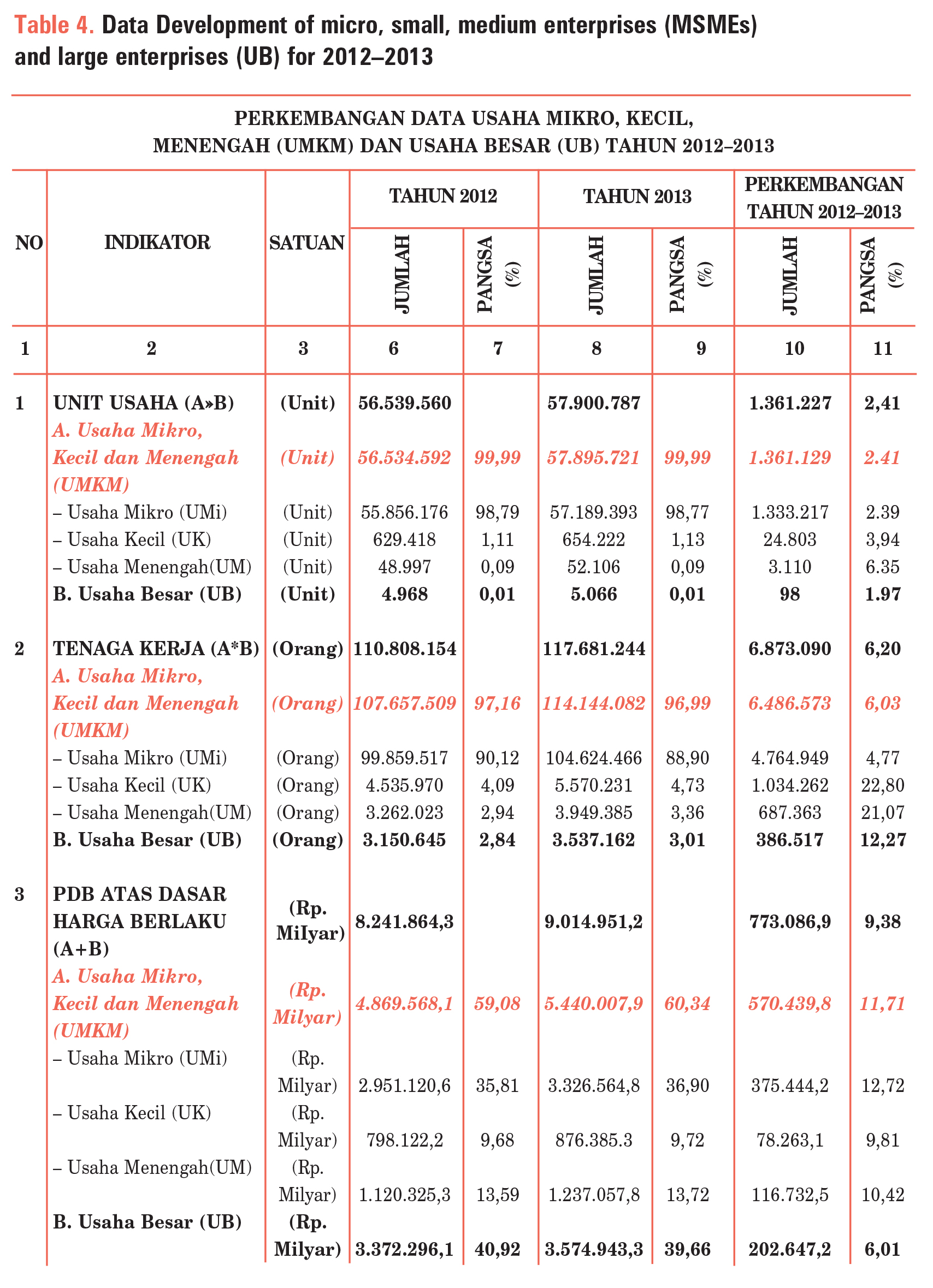
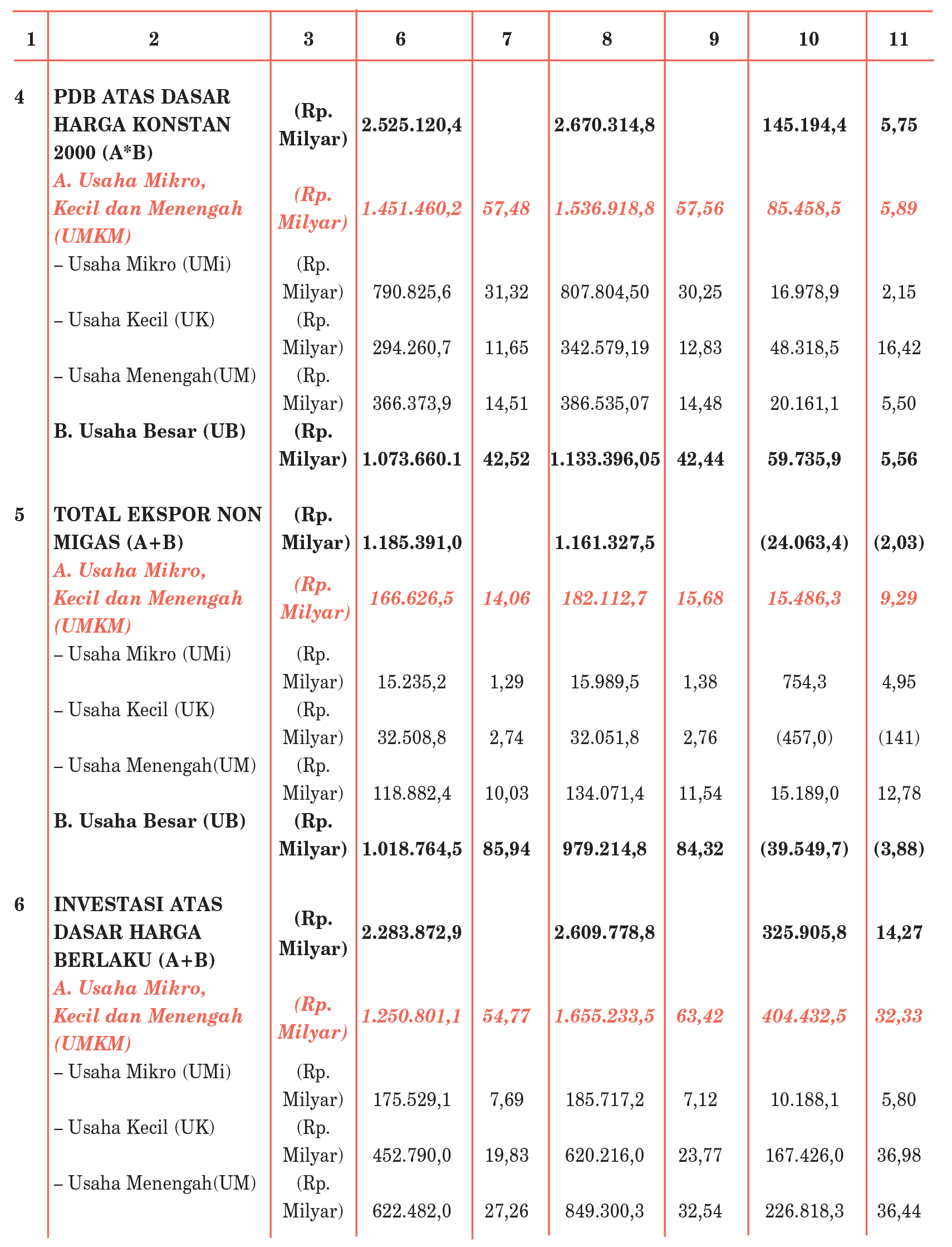
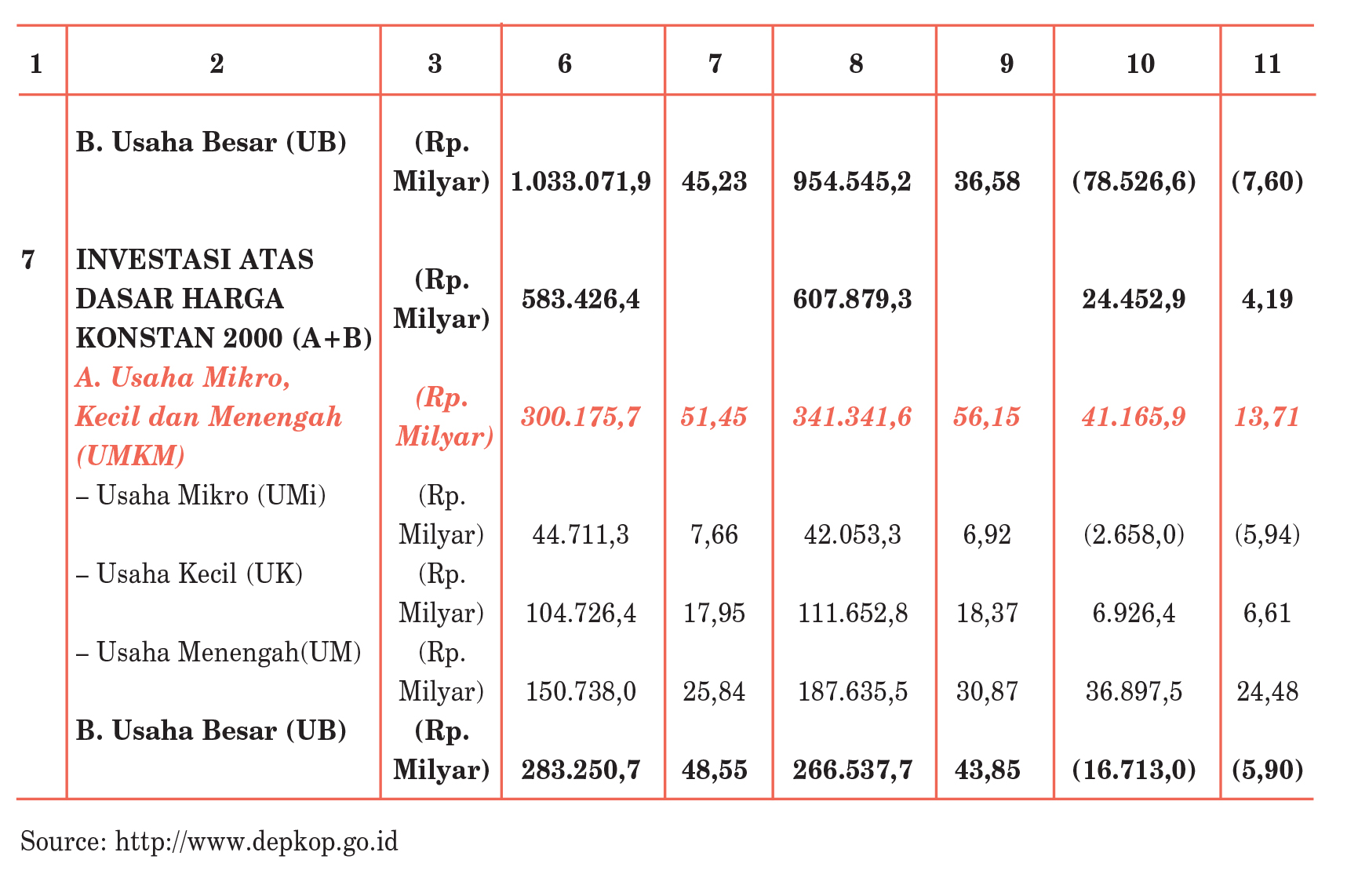
Meanwhile, according to data from Bank Indonesia, MSMEs in DKI Jakarta until this research was conducted amounted to 18,068 MSMEs (www.bi.go.id).
Information Communication Technology Readiness
In today’s business environment, more and more organisations are using information technology to improve their competitive position (Martínez-Caro & Gabriel Cegarra-Navarro, 2010). Information communication technology readiness is a term that is applied to assess the development of ICT (Spinelli et al., 2013). This study uses the concept of Spinelli et al. (2013) to focus on the development of the ICT infrastructure at the level of MSME companies. With ICT readiness meaning the presence of a series of strategies, organisational and structural features are prerequisites for MSMEs to be able to fully utilise the potential of ICT (Dyerson & Spinelli, 2011). In other words, there is growing interest in exploring the extent to which small companies can reap the rewards of the strategy, through previous investments in ICT infrastructure and ICT capabilities. Operationally, this translates into whether the company has access to up-to-date ICT and importantly understands what to do with the technology. Haug, Graungaard and Arlbjorn (2011) argued that although there have been many studies that have explored the decision to adopt ICT in SMEs, empirical facts show that attention has been much less (Spinelli et al., 2013). To emphasise the focus on the decision-making process, Haug et al. (2011) used the term ICT readiness, which refers to the relevant operational processes both in selecting ICT projects and in getting companies to accept and implement ICT projects. These factors include external pressure for change and experience and support for ICT by senior managers, as well as employees. However, the study of Haug et al. (2011) is limited to three longitudinal case studies. Similarly, the notion of ICT readiness is also evident in the analysis of Chen, Sen and Shao (2006) about the adoption of web services, where in this case, the simulation is used. Previously Johnston and Carrico (1998) suggested that organisational readiness should include both leadership within the managerial team and the development of an internal knowledge base as a precursor to the strategic integration of ICT. In contrast, Daniel, Hoxmeier, Smart and Smart (2004) viewed ICT readiness as varying depending on the culture and strategic goals of individual companies.
The following are the constituent elements of the ICT readiness dimension (Dyerson & Spinelli, 2011):
- Strategic vision: having a strategic and measurable foresight in preparing ICT for a sustainable competitive advantage.
- Capabilities in management processes: management has the capability and capacity to manage ICT readiness processes.
- ICT application infrastructure: management has the will and ability to apply ICT in an effort to achieve superior company performance.
Knowledge Management
Knowledge management is a combination of values, experiences, contextual information and expert views, which forms a framework for evaluating and incorporating new experiences and information. Within organisations, knowledge sharing is adapted into norms, practices and processes (Ke & Wei, 2007). This construct recognises that knowledge is an important strategic resource for a company to maintain its competitive advantage. Knowledge is an asset that needs to be managed properly (Davenport & Prusak, 1998). Knowledge management is a concept that emerged in the field of management and was widely adopted in organisations of developed countries to improve organisational performance (Gharakhani & Mousakhani, 2012). It is promoted as an important foundation for companies to develop sustainable competitive advantages and to stay at the forefront of excellence in the market.
Previous research stated that knowledge management is a source of sustainable competitive advantage and is the basis for economic performance (Gharakhani & Mousakhani, 2012). Knowledge management has become a significant research area in the last two decades (Maddan, 2009). Novak and Bojnec (2005) stated the importance of knowledge for economic growth in Slovenia. Knowledge is an important asset for small and medium companies at times of global competition (Gharakhani & Mousakhani, 2012). Knowledge management can determine important factors in the success of MSMEs (Gharakhani & Mousakhani, 2012). Gloet and Terziovski (2004) concluded that knowledge management is a conception of and access to experience, knowledge and expertise that create new capabilities, enable strong performance and innovation, and leverage added value. Knowledge management has grown significantly in recent years, where many researchers and practitioners realise that the potential of knowledge can stimulate innovation and improve performance (Cavaleri, 2004). Some researchers defined knowledge management as a discipline with the aim of promoting knowledge growth, knowledge communication and knowledge preservation within an organisation (Steel, 1993) in order to achieve better exploitation of this important resource. Knowledge management is important for every modern organisation. Knowledge management has received attention through in-depth research, especially in developing countries (Bruton, Dess, & Janney, 2007).
Entrepreneurial Strategic Orientation
Entrepreneurial strategic orientation has been studied extensively beyond the last decade (Wiklund, Patzelt, & Shepherd, 2009). Most have various disciplines in entrepreneurship and strategic management and thrive on the relationship between entrepreneurial orientation and performance. Entrepreneurial strategic orientation is proven to have an atmosphere of entrepreneurship in the company (Okeyo et al. 2016). Entrepreneurial strategic orientation has become the main concept formed from several disciplines: entrepreneurship, strategic management, organisational behaviour, marketing and operations (Dess, Pinkham, & Yang, 2011). Covin and Slevin (1989) defined entrepreneurial strategic orientation as a managerial characteristic that is a combination of risk taking, innovativeness and proactiveness. The entrepreneurship literature has examined the relationship between entrepreneurial strategic orientation and firm performance (Wiklund & Shepherd, 2005). Empirical evidence from Wiklund and Shepherd (2001) suggests that entrepreneurial strategic orientation has a positive effect on a company’s performance. Other research studies have found that entrepreneurial strategic orientation leads to higher market growth rates and firm performance (Wang, 2008).
The findings of Wiklund and Shepherd (2005) have revealed that entrepreneurial strategic orientation increases the company’s positive performance. Wiklund and Shepherd (2005), in a study on the influence of the environment on entrepreneurial strategic orientation and firm performance in 413 MSMEs in Sweden, found that entrepreneurial strategic orientation positively influences MSME performance. Lumpkin and Dess (1996) argued that companies with entrepreneurial strategic orientation have the ability to find and take advantage of market opportunities and can respond to challenges to prosper and thrive in a competitive and uncertain environment. These findings indicate that entrepreneurial strategic orientation improves firm performance. Conceptual Framework and Hypotheses (Figure 1)

Lack of understanding of the strategic role of ICT in the context of new approaches to marketing, active relationships with customers, and product and service development, as well as continuous innovation in products and services, is suspected to be the low ICT readiness of SMEs (Spinelli et al., 2013). The design of the ICT readiness mechanism by categorising it specifically becomes the basis for stronger policy support (Spinelli et al., 2013). In the ICT readiness dimension, it is stated that through a strategic vision, it is hoped that MSME entrepreneurs have a far-sighted vision in the use of ICT in order to achieve a sustainable competitive advantage. Through capabilities and management processes, as well as the willingness and ability to apply ICT, MSME entrepreneurs can maximise their entrepreneurial strategic orientation (Dyerson & Spinelli, 2011). Through these processes, the entrepreneurial characteristics of MSME entrepreneurs become increasingly honed and skilled. Based on the aforementioned analysis, the hypothesis is built as follows:
H1: ICT readiness has a positive effect on entrepreneurial strategic orientation.
Knowledge is an important asset for small and medium companies in times of global competition (Gharakhani & Mousakhani, 2012).
Knowledge management can determine important factors in the success of MSMEs (Gharakhani & Mousakhani, 2012). Gloet and Terziovski (2004) concluded that knowledge management is a conception of and access to experience, knowledge and expertise that create new capabilities, enable strong performance and innovation and leverage added value. Based on the aforementioned analysis, the hypothesis is built as follows:
H2: Knowledge management has a positive effect on entrepreneurial strategic orientation.
The introduction of innovative new technologies supported by effective and efficient knowledge management (McAdam & Reid, 2001) enables organisations to gain a sustainable competitive advantage over their competitors. In addition, it was also stated that ICT readiness affects average sales growth even higher if MSMEs have a higher entrepreneurial orientation level. Based on the aforementioned analysis, the hypothesis is constructed as follows:
H3: ICT readiness and knowledge management simultaneously have a positive effect on entrepreneurial strategic orientation.
Abebe (2014) stated that ICT readiness has a significant positive effect on MSME’s average sales growth rate. MSMEs that adopt ICT have a significantly higher average sales growth rate than MSMEs that do not adopt ICT. Through previous investments in ICT infrastructure and ICT capabilities, operationally, this translates to whether the company has access to up-to-date ICT and, importantly, understands what to do with the technology. Through the aforementioned analysis, the hypothesis is built as follows:
H4: ICT readiness has a positive effect on UMKM performance.
Wang and Yen (2012) found that knowledge has a positive association with a company’s operational performance. Wang and Yen (2012) found that explicit knowledge sharing was positively associated with innovation speed and financial performance. Nilsen, Nordström and Ellström (2012) suggested that employees find it easier to share experience-based knowledge. The flow of knowledge among individual employees, organisational decision-makers and corporate units produces a strong positive association with innovation (Zhou & Li, 2012). Based on the previous explanation, the hypothesis is constructed as follows:
H5: Knowledge management has a positive effect on UMKM performance.
High entrepreneurial orientation among MSME owners increases the formation and activation of personal strategies that have an impact on business growth and performance (Omisakin et al., 2016). Entrepreneurial orientation influences entrepreneurs and MSME owners in their involvement in business and product innovation, and market development (Carland et al., 1984). From the results of Omisakin’s et al. (2016) and Carland et al. (1984), it is clear that entrepreneurs and MSME owners are involved in business innovation. Therefore, it is assumed that the number of existing entrepreneurial orientation affects the overall success and performance of the MSME business. Therefore, the hypothesis is constructed as follows:
H6: Entrepreneurial strategic orientation has a positive effect on UMKM performance.
Bergeron (2003) stated that the knowledge management process or approach consists of eight fundamental components, namely, acquisition, modification, use, archiving, transfer, translation, access and completion. Experts have discussed several knowledge management processes or activities, including the acquisition or creation, storage, sharing or transfer and the use or application of knowledge (Beckman, 1999; Shearer & Bouthillier, 2002; Wig, 1999). Meanwhile, Johnston and Carrico (1998) suggested that organisational readiness should include both leadership within the managerial team and the development of an internal knowledge base as a precursor to the strategic integration of ICT. Daniel et al. (2004) viewed ICT readiness as varying depending on the culture and strategic objectives of the MSME company. These two variables are thought to have an influence on the company’s performance. From the aforementioned analysis, the hypothesis is constructed as follows:
H7: ICT Readiness, knowledge management and entrepreneurial strategic orientation simultaneously have a positive effect on UMKM performance.
Research Methods
Based on the strategy in conducting research, this study used a survey (survey research) using data collection techniques by compiling questions and asking respondents (Sekaran & Bougie, 2019). Based on the unit of analysis, this study uses individual units of analysis, including collecting data from each individual (Sekaran & Bougie, 2019). The questionnaire distribution period was September–October 2022. This study used explanatory research that involves analysing the concepts and problems being studied to identify causal relationships and then explain the variables that cause the problems being studied. This study uses information communication technology readiness and
knowledge management as independent variables, and entrepreneurial strategic orientation as an intervening variable on the dependent variable MSME performance. This study analyses the relationship between variables through hypothesis testing (hypothesis testing). The hypothesis being tested is the result of modeling based on theories and models that have been tested from the results of previous studies.
Structural equation modeling (SEM) is used to examine the relationship between variables. SEM is a multivariate analysis method, which is a combination of path analysis and factor analysis, to empirically test the measurement model and structural model built using certain theoretical studies. Several other terms from SEM are latent variable analysis, covariant structural analysis, linear structural relationship (LISREL) (Hair, Hult, Ringle, & Sarstedt, 2013).
Research Results and Discussion
Respondent demographic data
At this stage, an analysis of respondents’ profile and other information related to MSME respondents in DKI Jakarta was carried out, as stated in the first part of the questionnaire. The analysis was carried out one by one based on the questions in the questionnaire.
Based on the results of data collection by distributing questionnaires to MSME respondents in DKI Jakarta, the characteristics of each respondent can be identified with the hope that this information can be used as input for MSME managers in DKI Jakarta. The characteristics of the respondents who have been determined consist of five characteristics: (1) gender, (2) age, (3) formal education, (4) length of business and (5) turnover per year.
Gender
Table 5 data show that the majority of the sex of the respondents is male, that is, 287% or 73.2% of respondents, and only a small proportion is female, that is, 105% or 26.8% of respondents.

Age
Table 6 shows that that most of the respondents were 35–45 years old, that is, 170% or 43.4% of respondents, and only a small proportion of respondents were < 35 years old, that is, 104% or 26.5% of respondents.

Formal education
Table 7 shows that formal education of respondents were mostly S1 level, that is, 268% or 68.4% of respondents, and only a small number of respondents’ education types are at S3 level, that is, 3% or 0.8% of respondents.
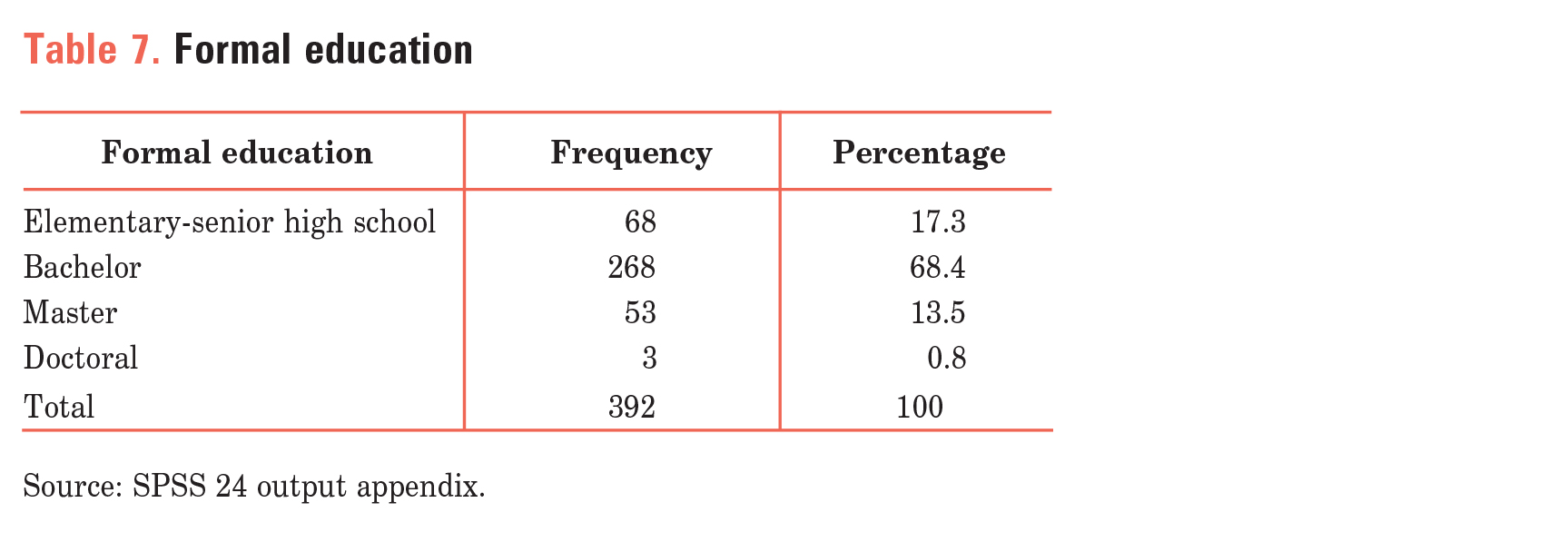
Length of business
Table 8 shows that the length of business is mostly > 5 years, that is, as many as 181% or 46.2% of respondents, and only a small proportion of respondents are in business of < 1 year, that is, 56% or 14.3% of respondents.

Turnover per year
Table 9 shows that most of the turnover per year is at 100–150 million, that is, 185% or 47.2% of respondents, and only a small proportion of respondents are at <100 million, that is, 54% or 13.8% of respondents.

In Table 10, each variable gets a Cronbach’s alpha value of > 0.6, meaning that the instrument can be said to be reliable.
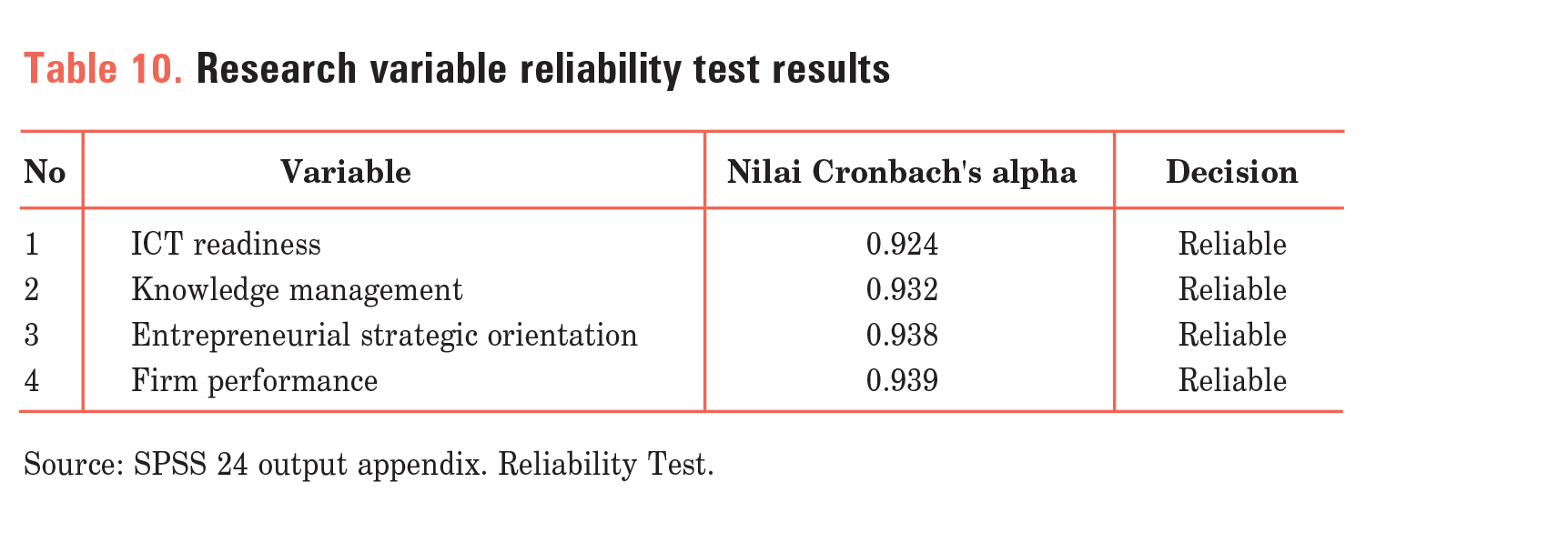
The model standardised image displays a complete model trajectory diagram with numbers that are standardised results (Figure 2).
The standardised solutions model image displays a model trajectory diagram complete with numbers that are the results of standardised (Figure 3).


The t-values model image displays a complete model trajectory diagram with numbers indicating the t-value of each estimated number.
In the results of data analysis using the Structural Equation Modeling (SEM) method and using the LISREL 8.80 application software
processing tool, a summary of the model suitability index is obtained, as shown in Table 11.

Table 11 shows that eight model suitability indices have a good model suitability index (good fit): RMSEA, NFI, NNFI, CFI, IFI, RFI, GFI and AGFI. Thus, it can be used in the next analysis. Furthermore, Figures 4 show estimation results of structural equations.

The model estimates image displays a complete model trajectory diagram with numbers which are non-standardized estimation results, while in this section relates to the evaluation of the coefficients or parameters that indicate a causal relationship or the influence of one latent variable on another latent variable. The resulting structural model equation is given in Table 12.
The value of the coefficient or parameter is a previously estimated value that is used as a comparison of the t-value to test the hypothesis of the study. The results of this evaluation is summarised Table 13, which is accompanied by the assumptions of the hypotheses of the research model.

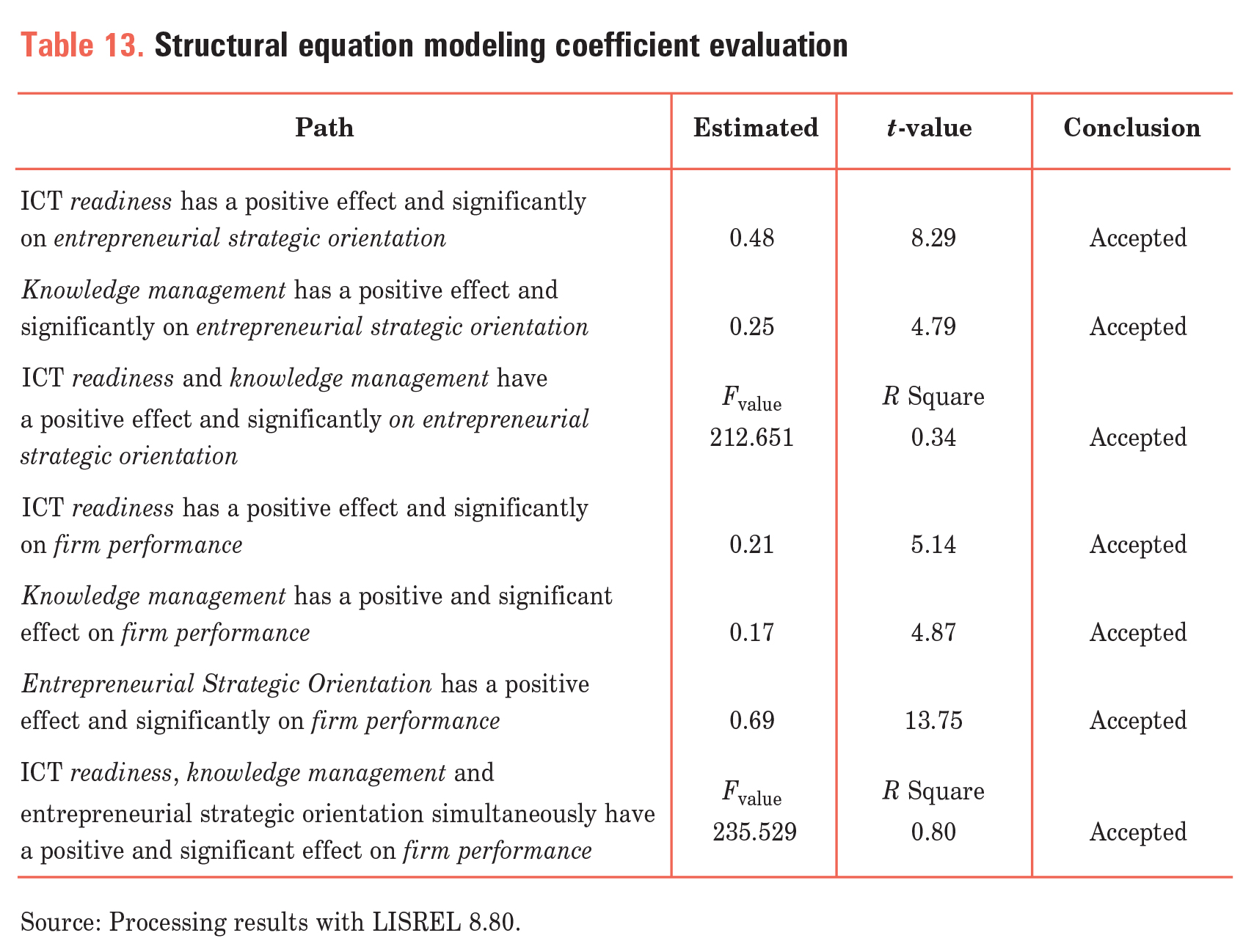
Conclusions and Future Research
This study found that ICT readiness and knowledge management have a positive influence on entrepreneurial strategic orientation and have implications for firm performance, which can be described as follows:
- This study found that ICT readiness has a positive and significant effect on entrepreneurial strategic orientation. The implication is that to improve entrepreneurial strategic orientation, ICT readiness should be improved. Efforts to improve ICT readiness include striving to introduce employees to the latest products on the market, using the latest equipment in producing goods/services and utilising social media in marketing products/services.
- This study found that knowledge management has a positive and significant effect on entrepreneurial strategic orientation. The implication is that to improve the entrepreneurial strategic orientation, knowledge management should be improved. Efforts to improve knowledge management include utilising knowledge in creating added value; applying knowledge to solve existing problems and supporting collaboration between individuals in creating knowledge.
- This study found that ICT readiness has a positive and significant effect on firm performance. The implication is that to increase firm performance, ICT readiness should be improved. Efforts to improve ICT readiness include striving to introduce employees to the latest products on the market, using the latest equipment in producing goods/services and utilising social media in marketing
products/services. - This study found that knowledge management has a positive and significant effect on firm performance. The implication is that to improve firm performance, knowledge management should be improved. Efforts to improve knowledge management include utilising knowledge in creating added value, applying knowledge to solve existing problems and supporting collaboration between individuals in creating knowledge.
- This study found that entrepreneurial strategic orientation has a positive and significant effect on firm performance. The implication is that to improve firm performance, it is necessary to improve entrepreneurial strategic orientation. Efforts to improve the entrepreneurial strategic orientation include daring to take risks to stay innovative even if it costs more, seeking to respond to any competitor’s actions and creating products/services that are unique and that is not yet available in the market.
- This study found that of ICT readiness and knowledge management have a positive and significant influence on entrepreneurial strategic orientation. The implication is that to increase entrepreneurial strategic orientation, it is necessary to improve ICT readiness and knowledge management. Efforts to improve the effectiveness of ICT readiness and knowledge management include striving to introduce employees to the latest products on the market, using the latest equipment in producing goods/services, utilising social media in marketing products/services, utilising knowledge in creating added value, applying knowledge to solve existing problems and supporting collaboration between individuals in creating knowledge.
- This study found that ICT readiness, knowledge management and entrepreneurial strategic orientation have a positive and significant influence on firm performance. The implication is that to increase firm performance, it is necessary to improve ICT readiness, knowledge management and entrepreneurial strategic orientation. Efforts to improve ICT readiness, knowledge management and entrepreneurial strategic orientation include trying to introduce employees to the latest products on the market, using the latest equipment in producing goods/services, utilising social media in marketing products/services, utilising knowledge in creating added value, applying knowledge to solve existing problems, supporting collaboration between individuals in creating knowledge, daring to take risks to remain innovative even though it costs more; attempting to respond to every competitor’s actions and creating products/services unique and that are not yet available in the market.
Future research
After conducting this research, based on empirical findings, the author conveys several suggestions in an effort to improve ICT readiness and knowledge management by mediating entrepreneurial strategic orientation on firm performance. Based on the results of research and discussion, the following suggestions can be put forward:
- In future research, it is necessary to include the innovativeness variable inherent to the characteristics of entrepreneurs or entrepreneurs, where innovation can be seen in product innovation, as well as innovation in processes, where innovation is closely related to MSME performance.
- Future research needs to explore ICT indicators such as trying to introduce employees to the latest products on the market, using the latest equipment in producing goods/services, utilising social media in marketing products/services, using brochures in promoting
products/services and having a commitment to always provide satisfaction for customers, and shared vision and goals are necessary for the success of an organisation. - Future research needs to exploit the effectiveness of knowledge management indicators such as utilising knowledge in creating added value, applying knowledge to solve existing problems, supporting collaboration between individuals in creating knowledge, creating knowledge by combining knowledge from staff, incorporating new knowledge in conducting training and supporting cooperation with other organisations in creating knowledge.
References
1. Abebe, M. (2014). Electronic commerce adoption, entrepreneurial orientation and small and medium-sized enterprise (SME) performance. Journal of Small Business and Enterprise Development, 18(21), 100–116.
2. Atalay, M., Anafarta, N., & Sarvan, F. (2013). Therelationship between innovation and firm performance: An empirical evidence from Turkish automotive supplierindustry. Procedia Social and Behavioural Sciences, 75, 226–236.
3. Beckman T. J. (1999). The Current State of Knowledge Management, in the Knowledge Management Handbook, ed. J. Liebowitz. Boca Raton. CRC Press.
4. Bergeron, B. P. (2003). Essentials of knowledge management. Hoboken, NJ: Wiley.
5. Bruton, G., Dess, G., & Janney, J. (2007). Knowledge management in technologyfocused firms in emerging economies: Caveats on capabilities, networks, and real options. Asia Pacific Journal of Management, 24, 115–130.
6. Caldeira, M., & Ward, J. M. (2002). Understanding the successful adoption and use of IS/IT in SMEs: An explanation from Portuguese manufacturing industries. Information Systems Journal, 12(2), 121–152.
7. Carland, J. W., Hoy, F., & Carland, J. C. (1984). Differentiating entrepreneurs from small business owners: A conceptualization. Academy Management Review, 9(2), 354–359.
8. Cavaleri, S. A. (2004). Leveraging organizational learning for knowledge and performance. The Learning Organization, 11(2), 159–176.
9. Chen, A. N. K., Sen, S., & Shao, B. B. M. (2006). Strategies for effective web services adoption for dynamic e-businesses. Decision Support Systems, 42(2), 789–809.
10. Covin, J. G., & Slevin, D. P. (1989). Strategic management of small firms in hostile and benign environments. Strategic Management Journal, 10(1), 75–87.
11. Daniel, E. M., Hoxmeier, J., Smart, A., & Smart, A. (2004). A framework for the sustainability of e-marketplaces. Business Process Management Journal, 10(3), 277–290.
12. Davenport, T. H., & Prusak, L. (1998). Working knowledge: How organizations manage what they know. Boston, MA: Harvard Business School Press.
13. Dess, G. G., Pinkham, B. C., & Yang, H. (2011). Entrepreneurial orientation: Assessing the construct’s validity and addressing some of its implications for research in the areas of family business and organizational learning. Entrepreneurship Theory and Practice, 35(5), 1077–1090.
14. Dyerson, R., & Spinelli, R. (2011). Balancing growth: A conceptual framework for evaluating ICT readiness in SMEs. International Journal of Online Marketing, 1(2), 43–56.
15. Gathungu, J. M., Aiko, D. M., & Machuki, V. N. (2014). Entrepreneurial Orientation, Networking, External Environment, And Firm Performance: A Critical Literature Review. European Scientific Journal, 10(7), 335–357.
16. Gharakhani, D., Mousakhani, M. (2012). Knowledge management capabilities and SMEs’ organizational performance. Journal of Chinese Entrepreneurship, 4, 35–49.
17. Gloet, M., & Terziovski, M. (2004). Exploring the relationship between knowledge management practices and innovation performance. Journal of Manufacturing Technology Management, 15(5), 402–409.
18. Hair, Jr, J. F., Hult, G. T. M., Ringle, C. M., & Sarstedt, M. (2013). A primer on partial least squares structural equation modeling (PLS-SEM). United State of America. Sage Publications, Inc.
19. Haug, A., Graungaard, P., & Arlbjorn, J. S. (2011). IT readiness in small and medium-sized enterprises. Industrial Management and Data Systems, 111(4), 490–508.
20. Hawk, Stephen (2004) A Comparison of B2C E-Commerce in Developing Country, Electronic Commerce Research, 4, 181–199. doi:10.1023/B:ELEC.0000027979.91972.36
21. Hofstede G. J., Pedersen P. B., Hofstede G. (2002). Exploring Culture: Exercises, Stories and Synthetic Cultures. Yarmouth. In Intercultural Press.
22. Jayanagara, O., (2022). The determinants of smes’ firm performance in Lampung province, Indonesia. Fair Value. Jurnal Ilmiah akuntansi dan Keuangan, 4(11), 5216–5227.
23. Jenkins, M., & Johnson, G. (1997). Entrepreneurial intensions and outcomes: A comparative causal mapping study. Journal of Management Studies, 34(6), 895–920. doi:10.1111/1467-6486.00077
24. Johnson, S., Snowden, N., Mukhuty, S., Fletcher, B., & Williams, T. (2015). Entrepreneurship skills: Literature and policy review. Retrieved from https://www.gov.uk/government/.
25. Johnston, H. R., & Carrico, S. R. (1998). Developing capabilities to use information strategically. MIS Quarterly, 12(1), 37–48.
26. Kartiwi, M., & MacGregor, R. C. (2007). Electronic commerce adoption barriers in small to medium-sized enterprises (SMEs) in developed and developing countries. Journal of Electronic Commerce in Organizations, 5(3), 35–51.
27. Kauffman, E. M. (2017). Startup Activity National Trends. Kansas City. Ewing Marion Kauffman Foundation.
28. Ke, W., & Wei, K. K. (2007). Factors affecting trading partners’ knowledge sharing: Using the lens of transaction cost economies and socio-political theories. Electronic Commerce Research and Applications, 6(3), 297–308.
29. Kombo, H. K., K’Obonyo, P., & Ogutu, M. (2015). Knowledge strategy and performance of manufacturing firms in Kenya. Journal of Business and Economic Policy, 2(3), 198–207.
30. Lee, L. T., & Sukoco, B. M. (2007). The effects of entrepreneurial orientation and knowledge management capability on organizational effectiveness in Taiwan: The moderating role of social capital. International Journal of Management, 24(3), 549–573.
31. Lumpkin, G. T., & Dess, G. G. (1996). Clarifying the entrepreneurial orientation construct and linking it to performance. Academy of Management Review, 21(1), 135–172.
32. Maddan, S. (2009). Measuring the impact of organizational culture factors on knowledge management implementation in the Jordanian telecommunication group (Orange): A case study (unpublished Master’s thesis). Amman Arab University for Graduate Studies, Amman.
33. Martínez-Caro, E., & Gabriel Cegarra-Navarro, J. (2010). The impact of e-business on capital productivity: An analysis of the UK telecommunications sector. International Journal of Operations and Production Management, 30(5), 488–507.
34. McAdam, R., & Reid, R. (2001). SME and large organization perceptions of knowledge management: Comparisons and contrasts. Journal of Knowledge Management, 5(3), 231–241.
35. Nilsen, P., Nordström, G., & Ellström, P.-E. (2012). Integrating research-based and practice-based knowledge through workplace reflection. Journal of Workplace Learning, 24, 403–415. doi:10.1108/13665621211250306
36. Novak, M., & Bojnec, S. (2005). Human capital and economic growth by municipalities in Slovenia. Managing Global Transitions, 3(2), 157–177.
37. Odhiambo, L.O. (2015). The relationship between capital structure, performance and replacement of CEOs in forms listed on the Nairobi Securities Exchange. Unpublished PhD Thesis. University of South Africa. School of Business.
38. Okeyo, W. O., Gathungu, J. M., & K’Obonyo, P. (2016). Entrepreneurial orientation, business development services, business environment, and performance: A critical literature review. European Scientific Journal, 12(28), 188–218. doi:10.19044/esj.2016.v12n28p188
39. Omisakin, M. O., Nakhid, C., Littrell, R., & Verbitsky, J. (2016). Entrepreneurial orientation among migrants and small and medium enterprises. Journal of Business Administration Research, 5(1), 6–22.
40. Parker, C. M., & Castleman, T. (2009). Small firm e-business adoption: A critical analysis of theory. Journal of Enterprise Information Management, 22(1/2), 167–182.
41. Rauch, A., Wiklund, J., Lumpkin, G. T., & Frese. M. (2009). Entrepreneurial orientation and business performance: An assessment of past research and suggestions for the future. Entrepreneurship Theory and Practice, 33, 761–787.
42. Reynolds, P. D. (2000). National panel study of US business start-ups: Background and methodology. In J. A. Katz (Ed.), Advances in entrepreneurship, firm emergence and growth (Vol. 4, pp. 153–227). Stamford, CT: JAI Press.
43. Runyan, R., Droge, C., & Swinney, J. (2008). Entrepreneurial orientation versus small business orienation: What are their relationship to firm performance? Journal Small Business Management, 46(4), 567–588.
44. Sekaran, U., & Bougie, R. (2019). Research methods for business: A skill -building approach. New York, NY: John Wiley & Sons. Inc.
45. Shearer, K., & Bouthillier, F. (2002). Understanding knowledge management and information management: The need for an empirical perspective. Information Research, 8(1), 141. Retrieved from http://InformationR.net/ir/8-1/paper141.html
46. Sheth, J. N., Sharma, A. (2005). International e-marketing: opportunities and issues. International Marketing Review. International Marketing Review, 22(6), 611–622. doi: 10.1108/02651330510630249
47. Sosa, J., Roy, A., & Bautista, A. (2015). Micro, small and medium enterprises and social networks in tourism industry in Manzanillo, Colima, Mexico. International Journal of Business and Management, 3(1), 90–105. doi:10.20472/BM.2015.3.1.006
48. Spinelli, R., Romano, D., & Harindranath, G. (2013). IT readiness in small firms. Journal of Small Business and Enterprise Development, 20(4), 807–823. doi:10.1108/JSBED-01-2012-0012
49. Steels, Luc (1993). Corporate Knowledge Management. Proceedings of ISMICK 93 management of industrial and corporate knowledge, France: Universite de Compiegne.
50. Stewart, W. H., Jr., & Roth, P. L. (2001). Risk propensity differences between entrepreneurs and managers: A meta-analytic review. Journal of Applied Psychology, 86, 145–153.
51. Wang, C. L. (2008). Entrepreneurial orientation, learning orientation, and firm performance. Entrepreneurship Theory and Practice, 32, 635–656.
52. Wang, H. K., & Yen, Y. F. (2012). An empirical exploration of corporate entrepreneurial orientation and performance in Taiwanese SMEs: A perspective of multidimensional construct. Total Quality Management and Business Excellence, 23(9–10), 1035–1044. doi:10.1080/14783363.2012.670917
53. Wig, K. M. (1999). What future knowledge management users may expect. Journal of Knowledge Management, 3(2), 155–165.
54. Wiklund, J., Patzelt, H., & Shepherd, D. (2009). Building an integrative model of small business growth. Small Business Economics, 32, 351–374.
55. Wiklund, J., & Shepherd, D. (2001). Knowledge-based resources, entrepreneurial orientation, and the performance of small and medium sized business. Strategic Management Journal, 24(13), 1307–1314. doi:10.1002/smj.360
56. Wiklund, J., & Shepherd, D. (2005). Entrepreneurial orientation and small business performance a configurational approach. Journal of Business Venturing, 20, 71–91.
57. Wu, A., & Zumbo, B. (2009). Understanding and using mediators and moderators. Social Indication Science, 87, 367–392.
58. Zhou, K. Z., & Li, C. B. (2012). How knowledge affects radical innovation: Knowledge base, market knowledge acquisition, and internal knowledge sharing. Strategic Management Journal, 33, 1090–1102. doi:10.1002/smj.1959
Dr. Oscar Jayanagara M.A.P., M.M., M.Th. — Doctor of Economy . Lecturer in statistics, strategic management, research method, management information system, management science, commercial law at Pelita Harapan University in Indonesia.
An Expert in Television & Film Management with Doctoral degree in Economy specialist in true stories resulting in more than 500 TV programs & series. The early leadership position of an international management, since 1998 at Christian Broadcasting Network as a producer and director, paved the way to establish strong film & television production networks inside and outside Indonesia. Besides, the good presentation and communication skills allowed to transfer research knowledge and skills through a series of successful workshops around Indonesian Television Broadcasting Companies, teaching more than 500 film & television crews, journalists, reporters, within the period from 1998 to 2018.
Kelly Azaryas Chen — Kelly is a design student that has the natural skills of dexterity, resilience and innovations. She is a fast and eager learner with a strong sense of responsibility. Having to start working at the tender age of 14, she acquired the soft skills of teamwork, communication and customer service.

